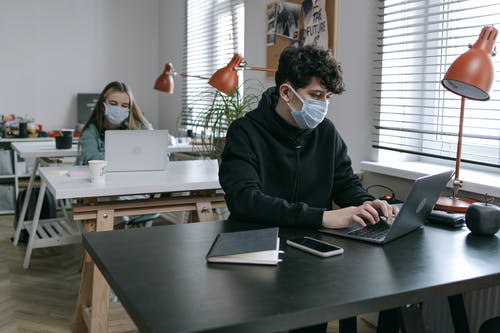As part of measures to mitigate disruption from the rapid spread of the omicron strain of COVID-19, the British government has asked public sector managers to review their contingency plans for a worst-case scenario of 25% worker absenteeism.
The federal government anticipates businesses and public services to be disrupted in the coming weeks, with daily infection counts at an all-time high, and those who test positive are obliged to self-isolate for about 7 days, according to an announcement. “So far, Omicron’s disruption has been contained in most sectors of the public sector,” it added, “but public sector executives have been requested to test preparations against worst-case scenarios of 10%, 20%, and 25% employee absenteeism.”

According to the Cabinet Office, which coordinates the federal government’s preparations, Prime Minister has asked officials to work closely with concerned sectors to establish solid contingency plans. It noted that the impact of Omicron on workforces in supply chains, public agencies, and institutions is being closely studied. Requesting volunteers, such as retired academics, to return to work is one of the mitigations being considered.
The Cabinet Office noted, “Work is underway to identify potential regulatory, policy, or operational adjustments that might avoid or relieve any impact.” On Friday, the number of new COVID-19 infections in the United Kingdom reached a record 189,846 cases, greatly exceeding previous highs. Hospitalizations and fatalities, on the other hand, have remained significantly lower than in previous rounds.
Additional COVID-19 constraints
There are possibly three methods for controlling Omicron’s spread. The least restrictive option would be to ask the people to minimize social mixing without enforcing it through the legal system. This would put England in line with Scottish rules, which have recommended individuals to limit their socializing and limit parties to three houses.
Mandatory limitations on home mingling, the reintroduction of social separation, and forcing bars and restaurants to close at 8 p.m. would be a step up from this. A return to complete lockdown, or something like it, is the third alternative, with a two-week “circuit breaker” said to be on the cards.
Each day counts when Omicron instances double every one and a half to two days. Despite the fact that the Netherlands has imposed a statewide lockdown beginning Monday in response to the latest surge of illnesses, England has taken a wait-and-see strategy until now.
Although this approach is understandable from a social standpoint, it may result in remedies being implemented too late to prevent massive strains on health systems if hospital admissions continue to climb.

Omicron is almost doubling in terms of case count every two to three days. Since the first increase of instances in November, this pattern has been persistent. Voluntary changes in behavior, as well as new government suggestions and mandates, may slow this down, although there is no data to quantify it yet. If the doubling pattern holds, a four-day wait might result in a condition that is two to four times worse.










